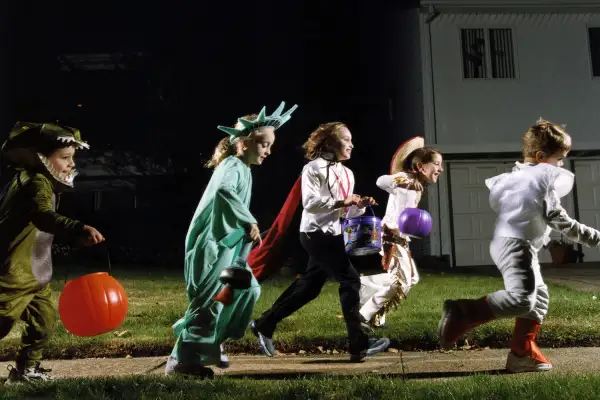Americans Will Spend Nearly $7 Billion on Halloween This Year
- These Fidget Spinners Have Dangerous Amounts of Lead for Children, Consumer Group Warns
- 10 Surprising Places to Get Cheap Home Goods, According to Interior Design Experts
- There's a New Netflix Email Scam Going Around. Here's How to Spot It
- One-Third of Middle Class Families Could End Up Paying More Under the GOP Tax Plan, Experts Say
- How Michael Jackson Still Earns Millions After His Death

The weather is (finally) cooling off, stores are stocking up on bags of candy, and the pumpkin carving is under way. That means it's almost Halloween, and consumers across the country are gearing up for a frightfully fun holiday.
Americans will spend $6.9 billion in total on Halloween—a slight decrease from last year's spending, which the National Retail Federation put at around $7.5 billion. More than 80% of consumers polled by the NRF said the economy is having an impact on their Halloween spending, with nearly 80% saying they will spend less overall this year as a direct result. The NRF predicts the average person will spend $74.34, compared with $77.52 last year.
We're in prime Halloween shopping time right now: 41% of consumers begin their Halloween shopping during the first two weeks of October, while 25% wait until the last two weeks of the month. More than one-third of shoppers began their shopping in September.
Here's a look at more numbers.
$2.5 Billion
The amoung spent on costumes for adults, children, and pets. Adult costumes are expected to outsell children’s costumes, with spending reaching $1.2 billion and $950 million, respectively. And pet owners will drop $350 million on costumes for their animals. Because what's cuter than a dachshund dressed as a hot dog?
$2.1 Billion to $2.6 Billion
Americans will spend at least $2.1 billion on candy, according to the National Retail Federation (the National Confectioners Association puts the number slightly higher, at $2.6 billion), with 71% of consumers surveyed saying they will be passing out some of the sweet stuff to trick-or-treaters.
70%
The percentage of people who say chocolate is their favorite Halloween treat, according to a recent survey by the National Confectioners Association. Candy corn placed a distant second, with 13% of the vote, followed by chewy candy (6%) and gummy candy (5%). Reese's and Snickers consistently rank as the most popular candy, according to Wired, while M&Ms and Twix battle it out for spots three and four (in this writer's opinion, Mounds and Almond Joys are criminally underrated).
Read Next: What's the Best Candy to Buy?
9 Billion
Pieces of candy corn that will be produced this year. Candy corn was introduced by the Wunderlee Candy Company in the 1880s, according to the NCA, before the Goelitz Candy Company (now Jelly Belly Candy Company) started making it in 1900. It has remained largely unchanged, except for the pace of its production: In the early years, its arduous creation process meant it was only available in the fall; now, with modern machinery, it's available year-round. The NCA estimates that more than 35 million pounds of candy corn will be produced this year, equating to nearly 9 billion pieces.
$366 Million
Worldwide box office revenues for all 10 movies in the Halloween franchise. The original, released in 1978, was shot for $300,000 in just 20 days and took in $47 million at the box office (equivalent to around $99.1 million today), making it the highest-grossing independent movie ever at the time.
$300 Million
The worth of the haunted house industry. There are 2,500 haunted attractions worldwide, according to NBC News, and prices for entry range from $15 to $40. The larger haunted houses can earn between $2 million and $3 million a season.
1.5 Billion
Pounds of pumpkin produced each year in the U.S., making it one of the country's most popular crops. At the Great Jack O'Lantern Blaze (pictured) in New York's Van Cortlandt Manor, more than 7,000 hand-carved pumpkins line the grounds of the riverside estate.
45.6%
Chance the market will rise on Halloween. That's compared to the historical October 31 average of 52.1%, according to Howard Silverblatt, senior index analyst for S&P Dow Jones Indices, making it a bad day for investors (for most days of the year, the chance that stocks will rise is better than 50-50). "Not only is the holiday more trick than treat, the movements, both up and down, are more extreme," he says. But there's no need to be spooked: This year Halloween falls on a Saturday, and Silverblatt notes that of the 12 times Halloween has fallen on a Saturday that he had data for, the market was up eight times. Sweet.
